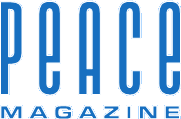Richard (“Dick”) Garwin was born in Cleveland. His father was a high school teacher by day and a movie projectionist at night. His mother was a legal secretary. Garwin was precocious and, in 1949, at the age of 21, earned a PhD at the University of Chicago under the legendary physicist Enrico Fermi, and was appointed Assistant Professor of Physics at the University that same year.
Fermi, who had been one of the technical leaders of the U.S. World War II atom bomb project, was at the time, on the Atomic Energy Commission’s General Advisory Committee (GAC). In Oc
tober 1949, following the panicked reaction in the U.S. to the detection of the first Soviet nuclear test, the GAC was asked if it would be feasible to develop a one thousnd times more powerful thermonuclear “hydrogen” bomb? The committee’s technical answer was uncertain but in its report, it objected that the development of “super bombs” would carry “much further than the development of the atomic bomb, itself the policy of exterminating civilian populations.” This objection led to the end of the advisory career of the GAC’s chair, J. Robert Oppenheimer.
President Truman ordered the development of the “H-bomb”, and Fermi began to spend his summers at Los Alamos working on the project.
In the summer of 1950, Fermi took Garwin with him to Los Alamos, and Garwin too became a summer consultant there. The following summer, Edward Teller shared with Garwin the idea of radiation implosion, in which the X-rays emitted by the explosion of an atomic bomb could be contained briefly and used to implode and ignite a thermonuclear “secondary.” Teller asked Garwin to design an experiment to demonstrate the concept. Garwin did, and his design was tested on an atoll in the South Pacific in 1952. Its explosive yield was 700 times that of the Hiroshima bomb. In parallel, in the Soviet Union, Andrei Sakharov and his colleagues also developed thermonuclear weapons, and the nuclear arms race became civilization threatening.
Two years later, in 1954, Fermi was dying of cancer. When Garwin visited him for the last time, Fermi confided that he regretted not spending more time contributing to the development of policy. Garwin took this to heart and became a ubiquitous policy advisor to both the government, including as a member of the President’s Science Advisory Committee (PSAC) during the Kennedy, Johnson and Nixon Administrations, and to the public. Indeed, Garwin conditioned his employment by the IBM Corp, which began in 1952, on being allowed to spend half of his time as a government advisor. Even working half-time, his many inventions at IBM helped shape our computerized world, including laser printers and touch screens, and he contributed importantly to basic science, including the detection of gravitational waves.
As a government advisor, Garwin did not limit his advice to how the government could develop a technology it wanted, but also the costs and benefits of doing so. This brought him into conflict with the Nixon Administration when Garwin became a prominent public critic of the Administration’s programs to deploy a defense against Soviet nucleararmed intercontinental ballistic missiles, which he that it could easily be overcome; and to the development of a supersonic passenger aircraft, the Supersonic Transport (SST).
Public opposition to nuclear-armed interceptors in the suburbs resulted in Nixon having to negotiate with the Soviet Union the 1972 treaty limiting ballistic missile defenses, but concerns that they would be deployed resulted in the deployment of multiple-warhead missiles in the 1960s and 1970s to assure even worst-case analysts that any defenses could be overwhelmed.
Garwin thought that the supersonic transport would be both noisy and uneconomic. This was demonstrated by the French-British Concorde project, which inspired the U.S. SST project but failed economically.
In 1973 – probably in significant part because of Garwin’s going public on those two issues –President Nixon disbanded PSAC. Three decades later, in 2001, George H.W. Bush established the President’s Council of Advisors on Science and Technology, but it has never had the same influence PSAC had during the early years of the Cold War.
Garwin sometimes had the affect of a human supercomputer, but he could also be humorous and was supportive of junior colleagues, including me. His warm wife Lois, who predeceased him in 2018, surely helped humanize him.
Frank von Hippel, a senior research physicist and professor of public and international affairs emeritus with Princeton’s Program on Science and Global Security, which he co-founded.



